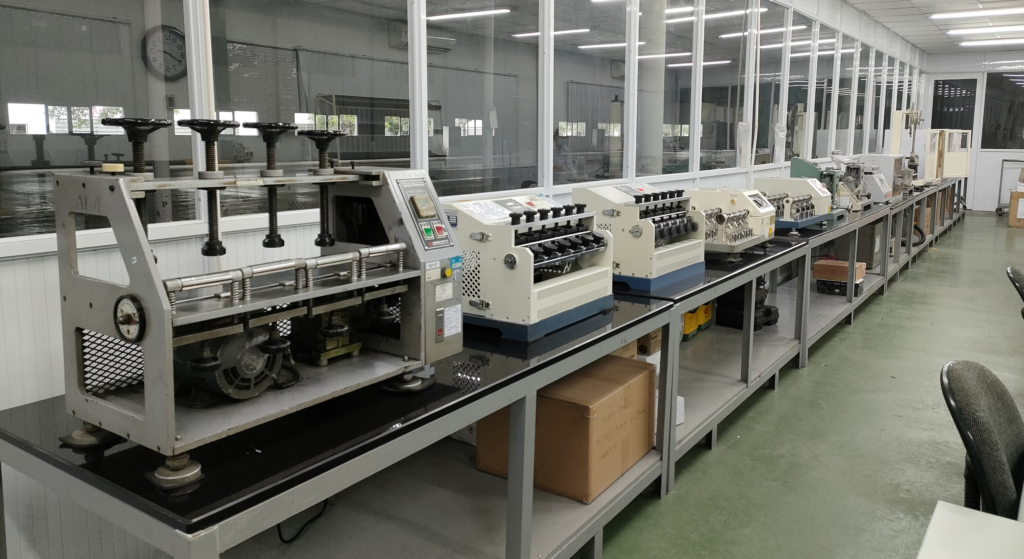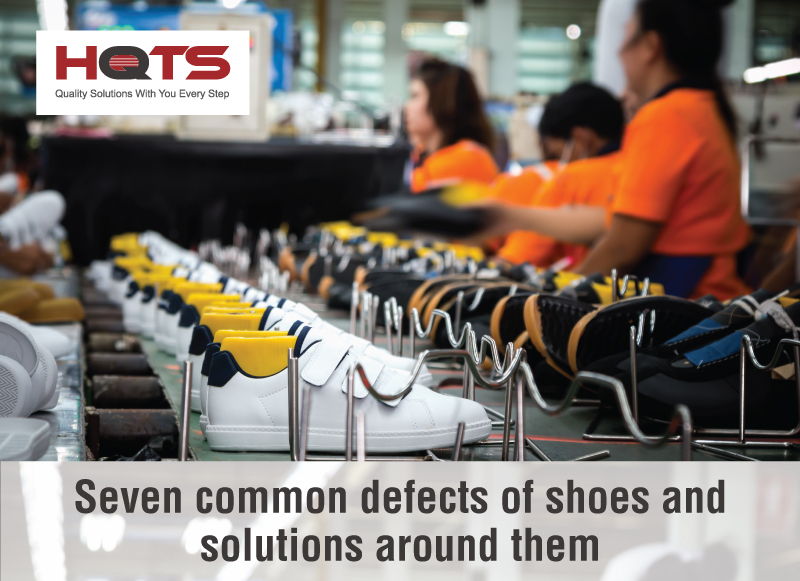Shoes are a commonplace purchase for consumers and an essential part of anyone’s wardrobe. Therefore each pair of shoes must be perfect before finishing footwear production. However, this is not always the case. Quality issues can occur during footwear manufacturing which makes a shoe defective. This can be due to several common reasons.
This article will discuss these reasons, how experts classify these issues and possible solutions for them.
Classifications for defective shoes
Products are broken down into three major classifications, which professionals use to qualify the level of the defect. These are:
Critical Defects
This is the highest level in which the product fails to meet regulation and poses a danger to a consumer. These items must be discarded as they are not fit for use.
Major Defects
This refers to footwear with issues that affect its appearance or durability. These issues could likely lead to a consumer returning the product due to being dissatisfied.
Minor Defects
The lowest classification, minor defects refers to shoes that fit regulation but have slight imperfections that will not likely impact customer satisfaction. This has a small likelihood of complaints or returns.
Classification zones

As well as these classifications, there is a visual-based system that determines an area based upon how they are viewed.
Zone 1:
Zone 1 refers to the most visible areas of the shoe in which any issues or defects are more likely to be considered a major or critical defect. This can include the sides and front of the shoes.
Zone 2:
Zone 2 refers to areas of the shoe which is less visible than zone 1. because of this, smaller defects have less of an impact on the shoe. This is why issues in this zone are more likely to be classed as minor defects.
Common defects in shoe production
Seven common defects can occur during production. It is the manufacturer’s duty to manage and solve these issues to ensure products are up to quality and safety standards. These are:
1. Incorrect sizing
This issue can occur due to the placement of production machinery, causing the symmetry and size to be off. This will significantly impact the shoe, causing it to be labelled defective and not fit for sale.
Possible solution
Correct placement and setup of machinery is key to avoiding this issue. Regular inspections of the machines can allow this issue to be highlighted before production commences to solve this issue before any shoes are made.
2. Material
The material used in the production is vital to the quality of the shoe. If low-quality material is chosen, it will produce shoes that are not high quality, therefore not meeting the regulation standard and more likely to have defects.
Possible solution
A simple solution to this would be to choose a higher quality material that fits with the footwear design. This in turn allows for a higher quality shoe.
3. Adhesive Compromise
A shoe can be branded defective when the adhesive connecting the gumming of the shoe to the sole is broken. This is most likely due to human error as not enough adhesive has been used in the production process.
Possible solution
More careful application of the adhesive is important to allow the gumming to stick to the sole. Proper training and monitoring of performance can assist in as well, minimising the chance of this occurrence.
4. Marks and Dents during Manufacturing
Marks and dents commonly occur due to poor handling of the products in the production line. Causing minor but noticeable errors in the footwear. These minor dents do not cause any significant impact on the shoe. However, there is a higher chance the shoes will be returned.
Possible solution
Implementing footwear inspection to assist in quality control and a careful handling procedure will allow for the likelihood of dents to be decreased.
5. Excess Glue and Wax or Oil
Chemicals such as glue, wax and oil are commonly used in the production line of footwear. In some cases, workers can add too much of these chemicals which leaves a residue. This causes it to become discoloured and stained, rendering the product unfit for selling and labelled defective.
Possible solution
This process is done by hand on the factory floor. Due to this, proper training and management is key to avoiding this. With appropriate training in place, workers will determine the correct amount of chemicals needed to keep the shoes in optimal form.
6. Sharp Points
Sharp points are a rare issue, however, a major one. Sharp points specifically refer to when a sharp object has been left on a shoe. This could be a staple or a nail.
Usually it is more common in leather shoes, as they are used to bind the shoe together. This can lead to nails not being placed correctly or even misplaced, causing a sharp point that can harm a consumer.
Possible solution
Implementing a metal detector during the production process can help determine if objects such as nails, needles or staples have been misplaced in the shoe. Quality control staff should also be on hand to monitor the products for potential hidden objects like these.
7. Mechanical Damage
Mechanical damage refers to any form of tearing, puncture, or scratches caused by machinery that affect the shoe’s functionality or aesthetics. If these occur, they are classed as critical defects. Therefore, it must be discarded.
This happens typically when the machines have faults due to not being set up correctly.
Possible solution
The solution to this would be regular inspection, maintenance of the equipment, Confirming whether it is working optimally or not. This will minimise the chance of this type of mechanical damage.
Footwear Quality Control Testing
The linking point between these most common defects is a lack of quality control within the production line. Because of this, the implementation of quality control is essential to maintaining quality footwear products.
With this in mind, we at HTQS have recently opened our new testing lab for footwear quality control in Vietnam to assist in this. Using state of the art tools and practices, we ensure products are up to quality regulation. Allowing for a smooth experience helping organisations with their quality control in the production pipeline.

The AQM BD Vietnam Laboratory has advanced testing equipment and fantastic facilities, which can provide all kinds of testing services across Southeast Asia including footwear, clothing and many other products. Our Footwear testing standards include but are not limited to ASTM, AATCC, SATRA and GB.
Our laboratory is ready to inspect the next items:
-
- Whole shoe inspection:Tortuosity, tension, sole peeling strength, aging..
- Interior test: color fastness, Martindale wear resistance..
- Vamp detection: coating adhesion, twists and tears..
- Sole detection: anti slip test, sole wear resistance, hardness..
- Accessory test: wear resistance, rust proof and strength test..
-
- Total lead, total cadmium
- Formaldehyde
- Hexavalent chromium
- Chlorinated phenols
- Sensitizing and carcinogenic dyes
- Dimethyl fumarate(DMFu)
- Phthalates(Phthalate)
- Nickel release (Nickel Release)
- Banned azo dyes(AZO)
- Other





